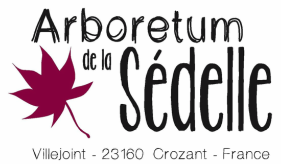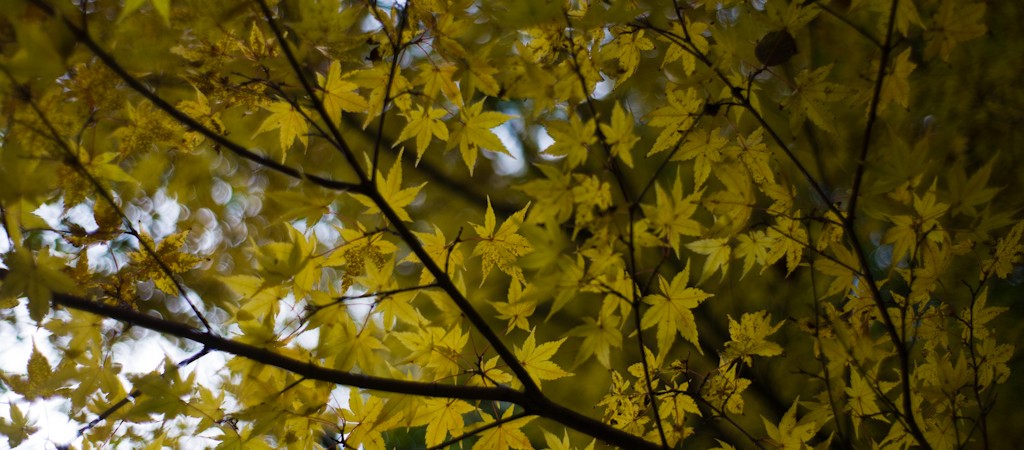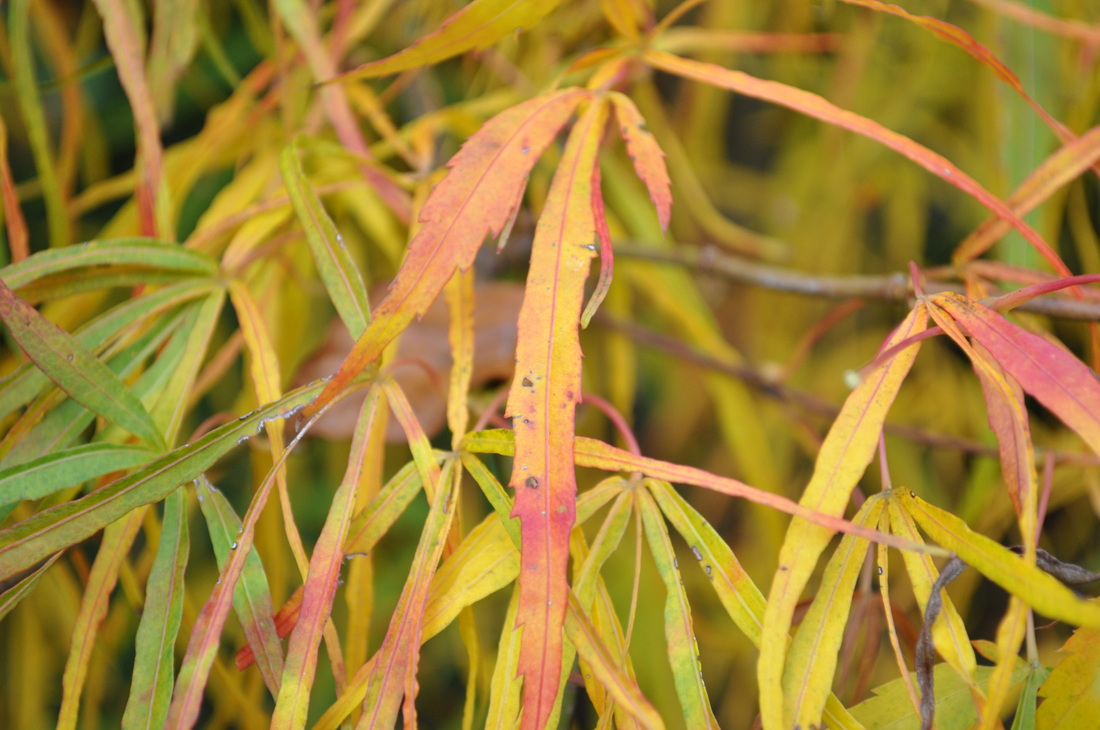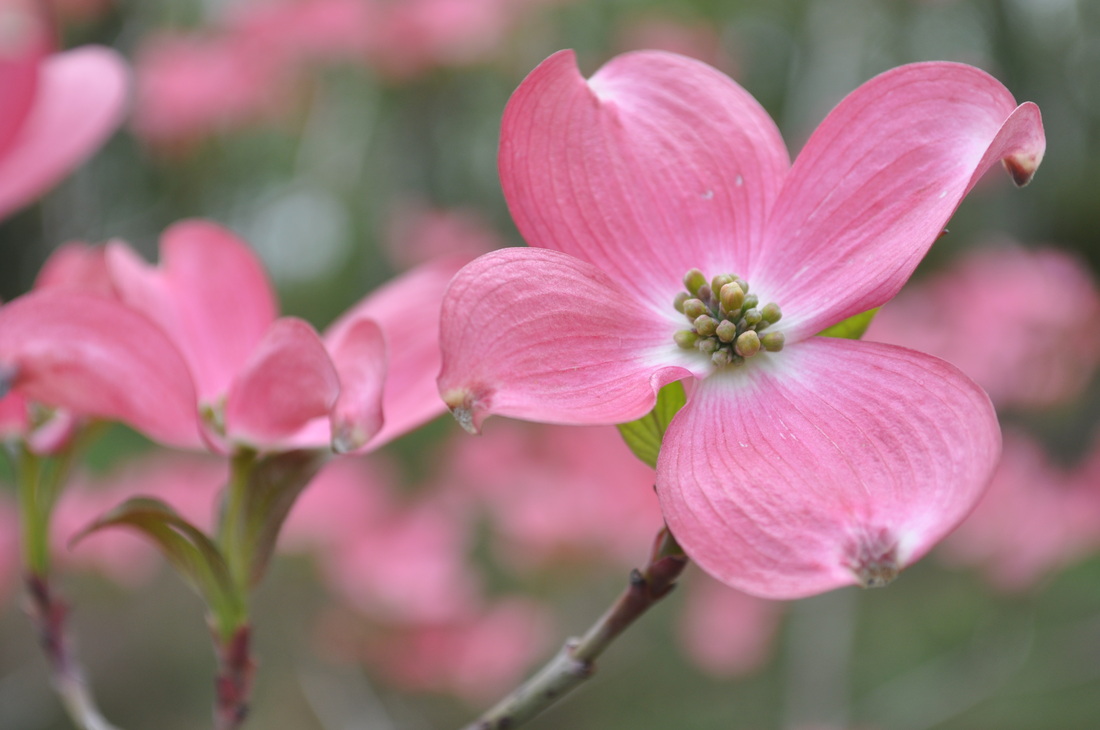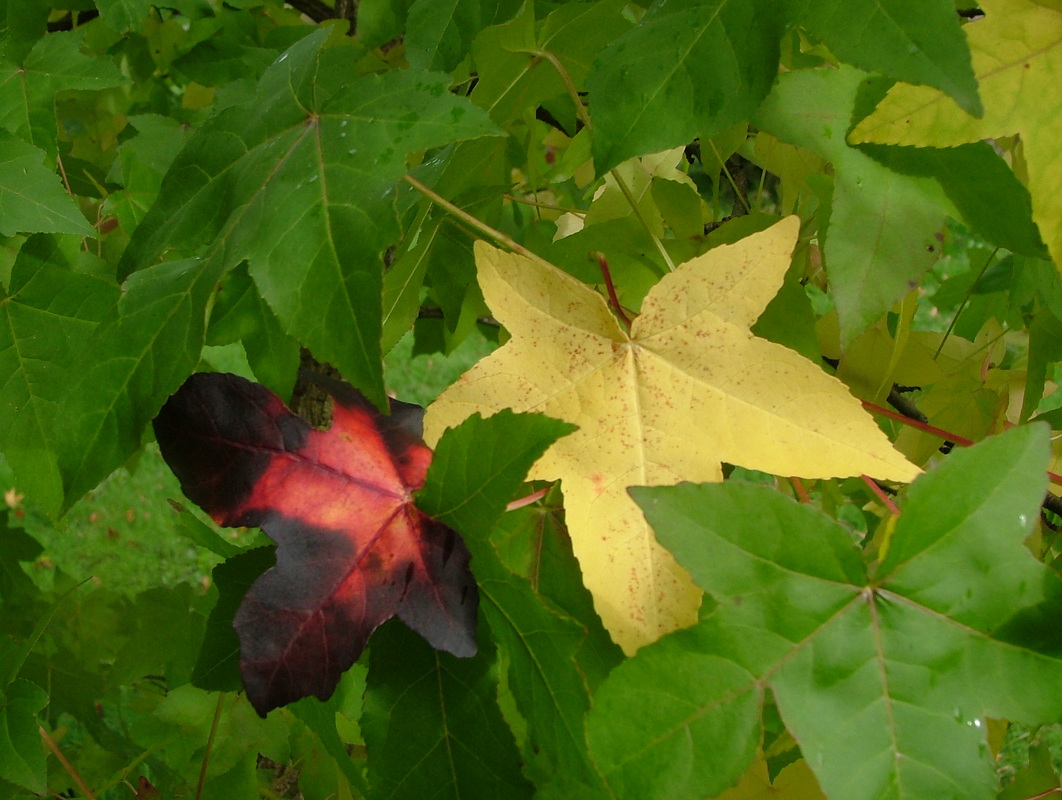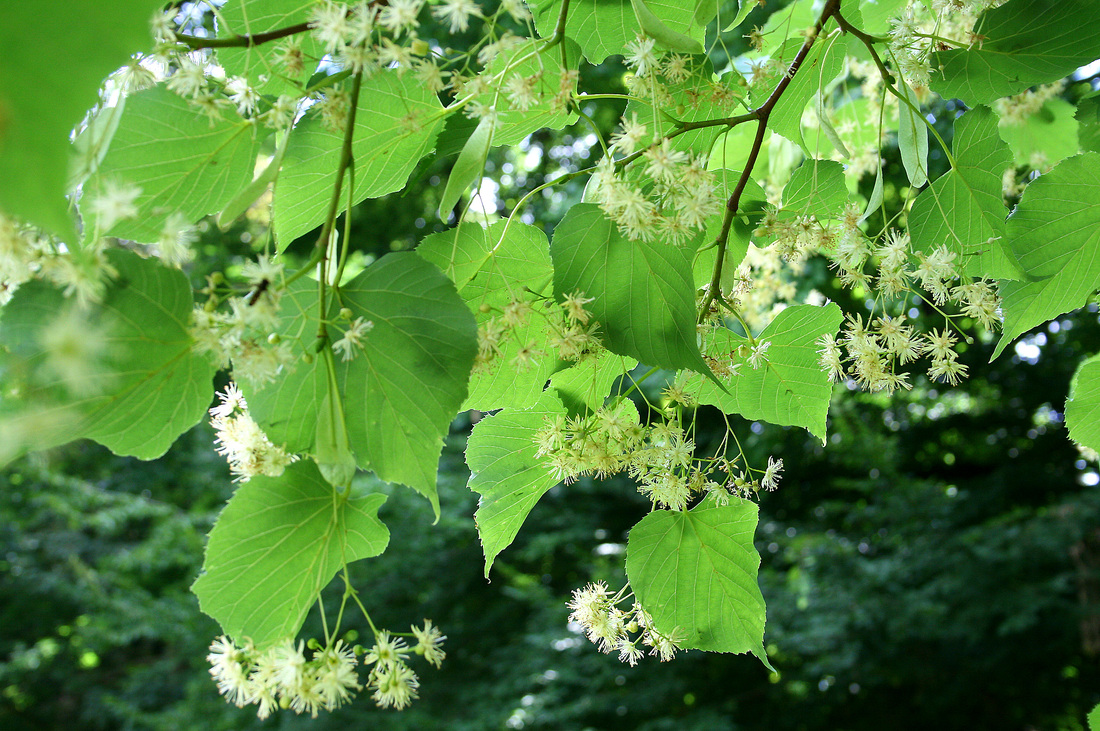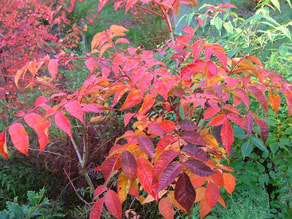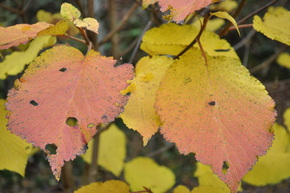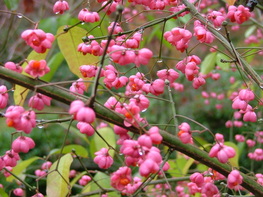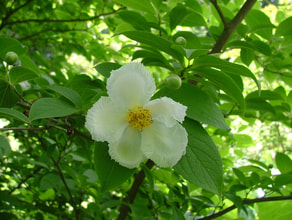The plant collections of the Arboretum de la Sédelle
The Arboretum de la Sédelle has a remarkable collection of maples (Acer) certified by the C.C.V.S. (Conservancy for Specialised Plant Collections) of the French National Horticultural Society. The collection consists of no less than 130 taxa: 90 species and sub-species and about 40 horticultural cultivars.
Other taxa well represented at the arboretum include oak (Quercus) - 36 species/cultivars, viburnum (Viburnum) - 27 species/cultivars, dogwood (Cornus) - 23 species/cultivars, spindle berry (Euonymus) - 19 species/cultivars, linden (Tilia) - 14 species and deciduous camellia (Stewartia) - 7 species.
The plant collections at the arboretum are limited in order to maintain open spaces, indispensable for observing the landscape. The planting of species from around the world is done with respect for the indigenous flora. Not less than 400 species of trees and shrubs from 4 continents offer the visitor a sensual experience, plunging one into a magical world of marvellous plants.
Other taxa well represented at the arboretum include oak (Quercus) - 36 species/cultivars, viburnum (Viburnum) - 27 species/cultivars, dogwood (Cornus) - 23 species/cultivars, spindle berry (Euonymus) - 19 species/cultivars, linden (Tilia) - 14 species and deciduous camellia (Stewartia) - 7 species.
The plant collections at the arboretum are limited in order to maintain open spaces, indispensable for observing the landscape. The planting of species from around the world is done with respect for the indigenous flora. Not less than 400 species of trees and shrubs from 4 continents offer the visitor a sensual experience, plunging one into a magical world of marvellous plants.
MAPLE
|
OAK
|
VIBURNUM (Viburnum) These shrubs belong to the Adoxaceae family and consist of 160 species. The flowers are produced in corymbs from 5 to 15cm across. Each small flower is white to cream or pink, with five petals and strongly fragrant in some species. The fruit is a somewhat flattened brightly coloured drupe, varying from red, to orange, violet, blue or black. The leaves are opposite and simple. Cool temperate species are deciduous often with magnificent autumn colours, while most of the warm temperate species are evergreen. Viburnum opulus, commonly known as Guelder rose, is an indigenous specie that grows along the Sedelle River.
|
DOGWOOD
| ||||||||||||||||||||||||||||||||||||||||||||||||||||||||
| cornus.pdf | |
| File Size: | 202 kb |
| File Type: | |
LIQUIDAMABAR
(Liquidambar)
This genus, member of the Hamamelidaceae family is made up of only 4 species; 1 from North America, 1 from Asia Minor and 2 from China. The name of this species comes from the English "liquid amber" referring to the tree's amber coloured sap. This balsamic sap, known as storax, is used in both the pharmaceutical and perfume industries. The American species, Liquidambar styraciflua (American sweet gum) has naturalised in the Sologne region of France where it appreciates the moist soil essential to its development. All 4 species, present at the Arboretum, are appreciated for their spectacular autumn foliage .
| liquidambar.pdf | |
| File Size: | 199 kb |
| File Type: | |
| quercus.pdf | |
| File Size: | 203 kb |
| File Type: | |
LINDEN
(Tilia)
The genus Tilia is made up of approximately 30 species of which 3 are indigenous to Europe: small leafed linden (Tilia cordata), large leafed linden (Tilia platyphyllos) and Dutch linden (Tilia X vulgaris) also known as Tilia intermedia, a natural hybrid between T. cordata and T. platyphyllos. They are all large trees growing up to 50 meters with an ovoid crown. The hermaphroditic flowers varying from white to yellow are strongly scented and melliferous. A forest tree with soft wood, lindens are found in the temperate regions of the northern hemisphere. The indigenous species, Tilia cordata, grows naturally along the Sedelle River.
| tilia.pdf | |
| File Size: | 114 kb |
| File Type: | |
SUMAC
(Rhus)
Rhus is a genus of trees, shrubs and creepers of the Anacardaceae family of which the cashew nut is the most well-known species. The genus consists of more than 120 species present in the warm and temperate regions of both the northern and southern hemisphere. Often rich in tannin the exuberant foliage of this genus reminds one of the tropics. The large deciduous compound leaves of the norther species vary in autumn colour from yellow through to purple.
| rhus.pdf | |
| File Size: | 7 kb |
| File Type: | |
| viburnum.pdf | |
| File Size: | 117 kb |
| File Type: | |
SPINDLE BERRY
(Euonymus)
These shrubs or small trees belong to the Celastraceae family. A genus easily identifiable by its fructification of pendulous capsules, often brightly coloured. The numerous species (over 120) include many marvels for the forest garden. The European spindle berry, Euonymus europaea is one of the most spectacular not only for its bright pink fruit but also for its autumn foliage. Common in the arboretum the leaves and fruit of this species are poisonous to man. The wood is used to make top quality drawing charcoal hence the French common name "fusain".
| euonymus.pdf | |
| File Size: | 205 kb |
| File Type: | |
DECIDUOUS CAMELLIA
(Stewartia)
Stewartia is a genus of 10 species from the Theaceae family, of which the Camélia (tea) is the most well known genus. Most of the species originate from China, Korea, Japan, Laos and Thailand with 2 species from the south eastern region of northern America. They are deciduous trees or shrubs with a distinctive flaky yellow/orange bark. The large white flowers appear towards the end of summer. This is a genus less known to gardeners but well worth cultivating.
| stewartia.pdf | |
| File Size: | 6 kb |
| File Type: | |
